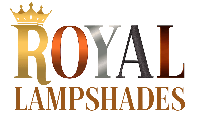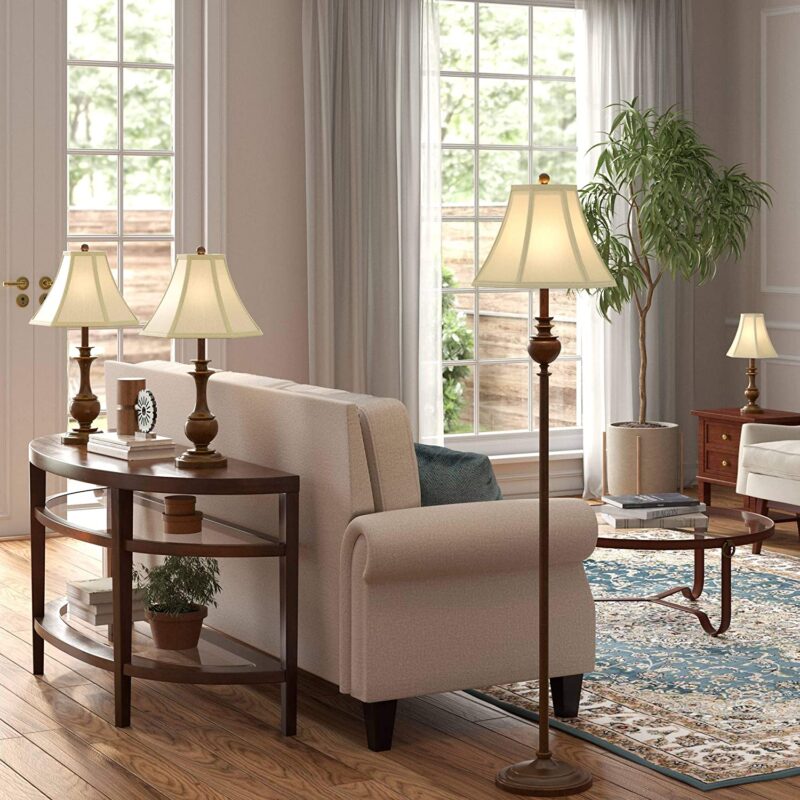Sifting through jargon can make shopping for any product more stressful than it needs to be. We’re here to help.
Take a look below to learn about the parts that make up a lampshade.

Standard Fitter Types
Anatomy of a Standard lampshades typically use a spider fitter to connect to your lamp. The washer slots onto the top of the lamp’s harp and gets tightened down by a finial (see below). Additionally, the spider arms will often have v-notches, which allow the shade to be set on top of lamps with diffuser bowls, adding extra utility.
Less common are “UNO” fitters. These connect to the lamp’s socket base instead of the lamp harp. Hanging floor lamps often use this fitter configuration, since there is no harp to connect to.



Other Fitter Types
Some lampshades require the use of a clip. Clips are used on smaller table lamps, chandeliers, wall sconces, etc., and the clip attaches directly to the light bulb. Clips come in a few different styles, and the style depends on the shape of the bulb.
The standard clip for chandelier shades is the Flame Clip. It fits over “candelabra” bulbs or other flame-shaped bulbs (hence the name).
Round Clips are used for standard bulb shapes. These are great for small table lamps and desk lamps that use common household bulbs (usually the E26 bulb).
Clips can come in single clips and double clips. While the single clip does the job just fine, the double clip (see left and right) offers increased stability. This double clip style keeps the shade from moving if it gets bumped and helps maintain consistency when using multiples of the same shade (for example, on a chandelier).
When using clip-style shades, pay attention to the maximum wattage the shade can handle. Because the shade clips directly to the bulb and sits quite close to it, using the wrong bulb can cause heat damage to the shade. This can not only ruin the shade, but it could also be a fire hazard.




Construction and Attachment
The fabric of your shade tells a story about the lamp itself. Smooth silk-type fabrics are elegant, refined, exquisite. Linens have a sensibility about them, a quiet confidence. Burlaps are rugged, enduring, and unashamed. Prints are bold, explosive, vibrant. The fabric you choose will say something about your lamp, about the room, about your style.
Beneath the fabric of your shade, the frame gives it support and shape. The way the frame is made can affect the way the fabric can be applied and can also change the way the fabric catches the light. The frame is made of metal, and its quality absolutely matters in determining how long your shade will last.
The lining of the lamp shade is the material on the interior of the shade. The thickness of the lining will determine how much light can penetrate the shade (making it glow). A thicker lining is preferred when you want the shade’s color to be the same whether or not the bulb is turned on. Reflective linings prevent light from being absorbed by the shade and force the light out of the top and bottom of the shade. Linings can be made of several different materials, such as fabric, plastic, or styrene, each with a unique level of diffusion or reflection.
Finials, while not technically a part of the shade, are a crucial addition for a shade that uses a spider fitter. The finial is the piece that screws onto the top of the harp and tightens the shade in place. Finials are often decorative and distinctive, allowing you to accentuate your lamp’s design and finish the look.





Shade Shapes
Shades come in a variety of shapes and sizes! The shade you’ll want will depend on your lamp, first and foremost. The shapes that are built into your lamp should either be copied by your shade or should be boldly contrasted by your shade. For example, if your lamp is built of a number of circular shapes, a rounded shade would be preferred over a squared shade. However, if your lamp bends inward, a bell-shaped shade would offer a pleasing contrast by bending outward.
Next, you should consider the dimensions of your shade. We measure our shade as (Top Diameter) x (Bottom Diameter) x (Slant Height). The slant height is measured in a straight line from the top edge to the bottom edge of the shade. The size of your shade will depend on the lamp base (whether it be a table lamp or a floor lamp), as well as your own personal preference.
Check your lamp and decide what works best for you. Remember, you can always reach out to us here at royalLAMPSHADES for advice (as you can imagine, we’re crazy about this sort of thing).







Lampshade Design Features
Now it’s time to narrow down the features you want in your new lampshade. This is the fun part!
Pleated fabric adds variation to the amount of light coming through the shade, giving texture and personality to the lampshade. There are several types of pleating, including wide pleat, gathered pleat, side pleat, ruche pleat, and more. Search “pleat” on our website to check out all the varieties!
Trims offer a touch of subtle (or not-so-subtle) styling that can make your shade stand out from the crowd. Decorative trims are widely varied, so you’re sure to find the one that matches your aesthetic.
A lampshade Gallery is a flat band around the top or bottom of the shade. The gallery is often decorated with special pleating, braiding, bead-work, or embroidery, adding a classy touch to your shade.
The shape of the frame is also variable, and dramatically informs the style of the shade. Scalloping gives a soft impression, whereas Corner Cuts impart a sense of sharp stability. The “Fancy” style combines rounded shapes and square corners, giving you the best of both styles. The number of scallops and the style of the corner cuts change by model, so take your time and find the one that best matches your lamp and home decor.
Some shades also include Beads or Tassels hanging from the bottom of the frame. These offer yet another layer of personality and style for your shade and can pair amazingly with the right lamp.




This guide should give you all the information you need to make a confident lampshade purchase.
If you have any more questions or concerns, feel free to get in touch with us! Simply click the chat icon at the bottom right of your screen to send us a message.
Start exploring all our shades by clicking the link below!


 Basic Shades
Basic Shades
 6-way
6-way
 Bell
Bell
 Drum
Drum
 Empire
Empire
 Hexagon
Hexagon
 Oval
Oval
 Rectangle
Rectangle
 Round
Round




 Floating Canvas Frames
Floating Canvas Frames
 Handcrafted Lamps
Handcrafted Lamps
 Picture Lights
Picture Lights
 Wall Lamps
Wall Lamps